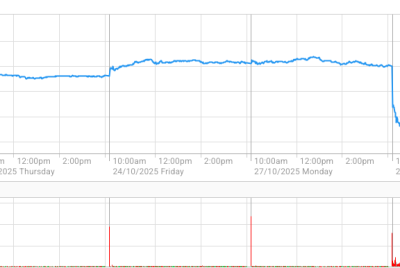Small Businesses Set For A Perfect Storm In 2022

A perfect storm is brewing for small businesses in 2022 that could blow scores of them away.
“The year 2021 was a difficult year for small businesses, but most of them survived thanks to government support,” said Kostas Mastoras, owner of Titan Foods in Queens, New York. "2022 will be even more difficult, as many of the challenges they faced in 2021 remain, like COVID-19 related costs, supply chain bottlenecks, labor shortages, and rising material and energy cost remains. Meanwhile, the government programs that save them last year fade away.”
Ira S. Wolfe, President, and Chief Googlization Officer at Success Performance Solutions agreed, adding a couple of more factors.
“COVID, inflation, rising interest rates, supply chain disruptions, and controversy over vax mandates will continue to challenge small businesses [as well as enterprise companies too],” he said. “But the biggest disrupter will be people. A shortage of skilled and qualified labor to fill open positions exacerbated by record-level resignations and Baby Boomer retirements will crush many small businesses.”
Wolfe is particularly concerned about the state of labor-intensive small businesses like restaurants, hospitality, and entertainment. “In just our small town, Burger King just closed. The diner, which used to stay open 24/7 on 363 days each year, now closes at 2 p.m. during the week and 9 p.m. weekends,” he said. “Dunkin Donuts closes around 1 p.m. each day, sometimes later depending on staffing. They used to be open every day until 8 p.m.”
Carlos Castelán, Managing Director of The Navio Group- a business management consulting firm, sees the lack of inventories as the biggest challenge for small businesses in 2022. “Having or not having inventory could be the difference between success and failure during early 2022,” he said. “The first and possibly second quarter of 2022 will be a test of small business supply chains and operational capabilities.”
That’s a difficult test, indeed. Smaller businesses that do not have the deep pockets of large companies to charter their transportation vessels to bring merchandise from China and Vietnam. They have to wait for the merchandise to arrive through the regular channels.
Travis Moskowitz, Director, CFO Advisory at Wiss & Company, sees labor shortages the war for talent as the most significant challenge for small businesses in 2022. “There are more job openings than available talent to fill these roles, and companies have started to increase compensation and benefits to be more competitive," he said. “Retention will continue to be one of the most significant concerns for companies next year.”
Meanwhile, small businesses will continue to face old challenges, like mandates by local governments regarding the way they manage their businesses.
An excellent example of such mandates is the “Fair Workweek” laws in effect in New York City and San Francisco. These laws require employers to prepare work schedules for their employees ahead of time. They are add-ons minimum wage mandates, which have been in fashion around major U.S. cities in recent years, as local governments have assumed more active roles in the local economy.
The Fair Week mandate hits restaurants and retailers particularly hard, a sector that employs many hourly-paid workers.
In theory, this mandate is a good thing. It addresses the unpredictable nature of employment in these two industries. However, in practice, it is another burden to local businesses, limiting their freedom to adjust to changing market conditions, pushing them off the cliff.
Even before the pandemic breakout, the San Francisco and NYC retail and restaurant sectors saw the practical side of these policies: store closures and layoffs, as small business owners cannot keep up with local government mandates that raise business costs.
But there are new challenges, too, like the receding of free money, due to the Fed’s tapering. It will end the flow of new money in the economy by the end of March 2022. Soon after that, tapering will be followed by the Fed’s tightening, which will take funds out of the economy.
The result of these policies is a higher cost of money for small businesses that are already in debt.
We’ll know what happens to heavily indebted businesses when the cost of money rises.





















